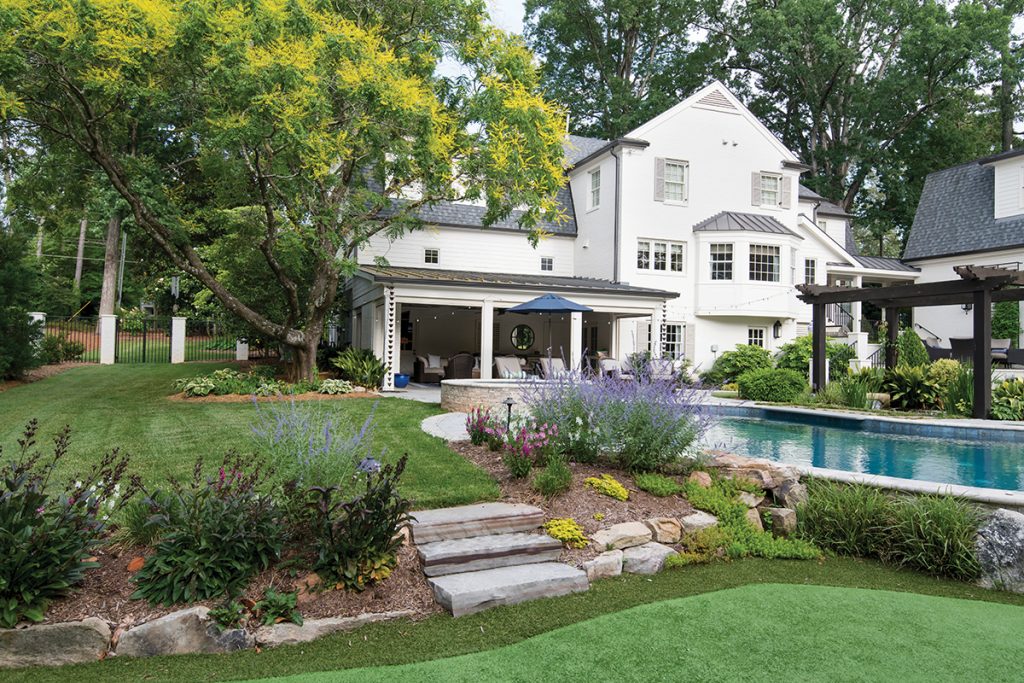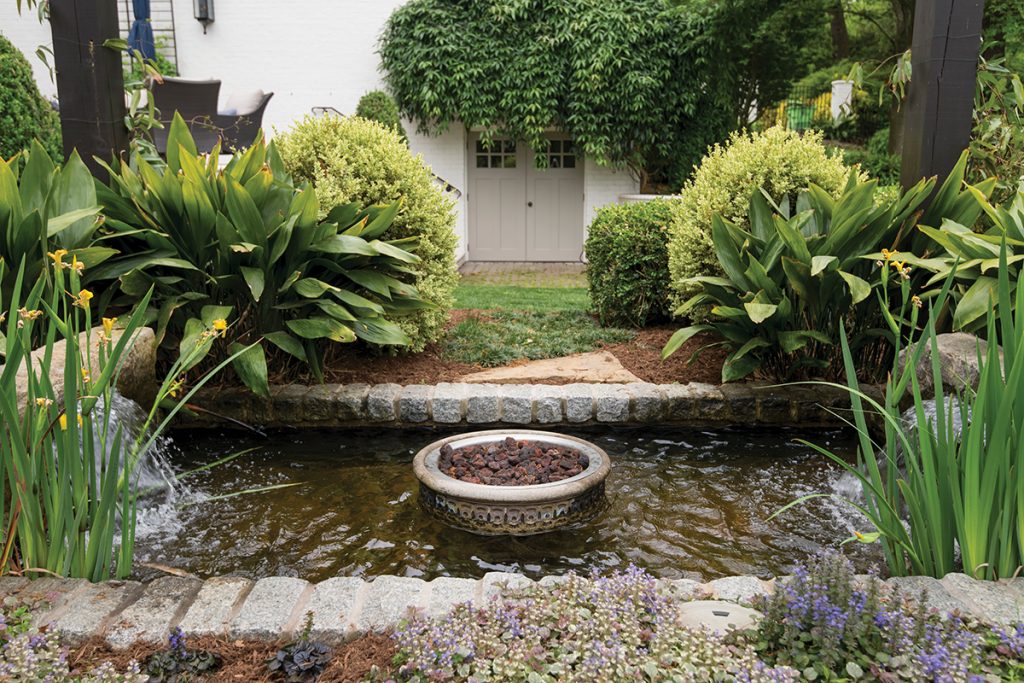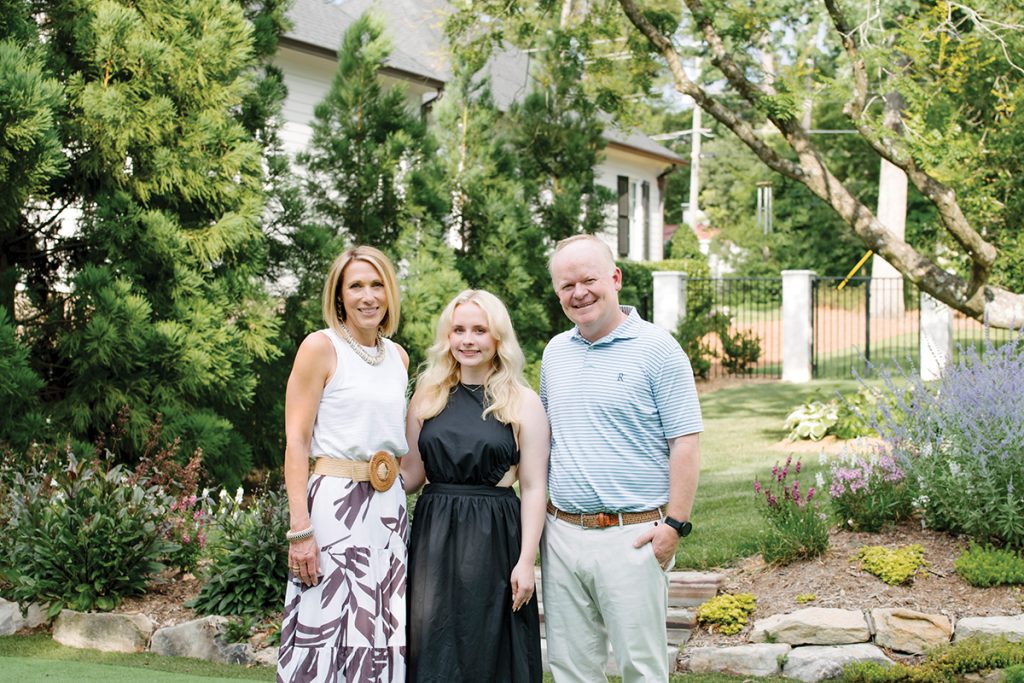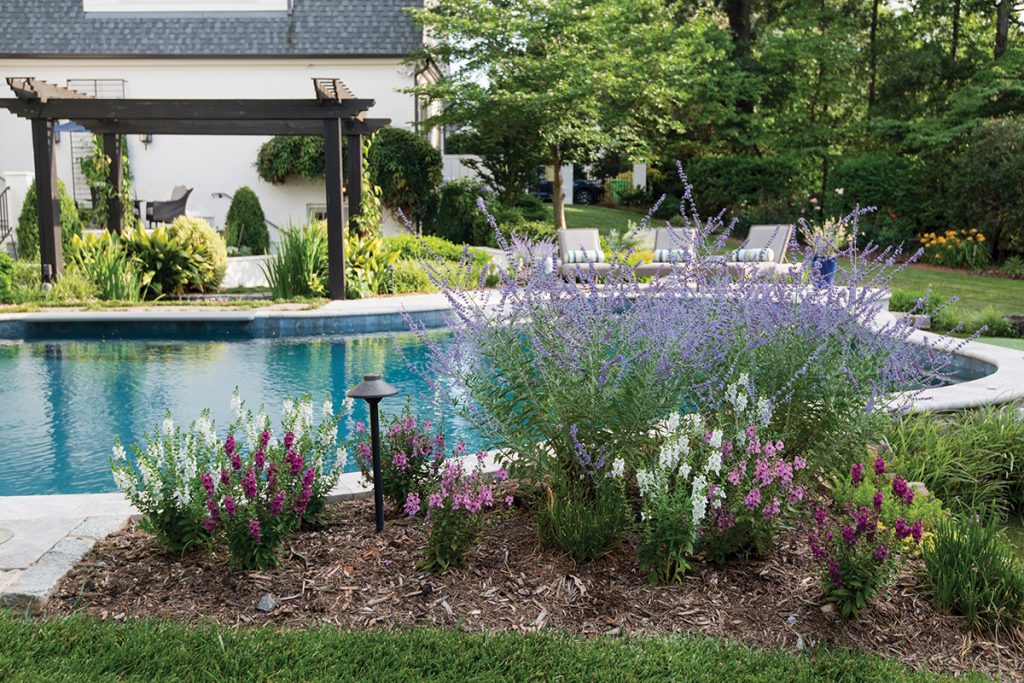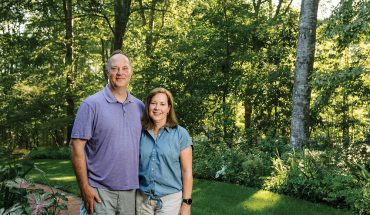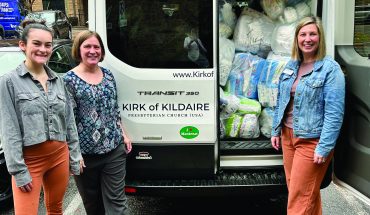Elizabeth Lawrence was the first woman to earn a degree in landscape architecture from NC State. This flower-filled garden still showcases her work.
by Katherine Snow Smith | photography by Liz Condo
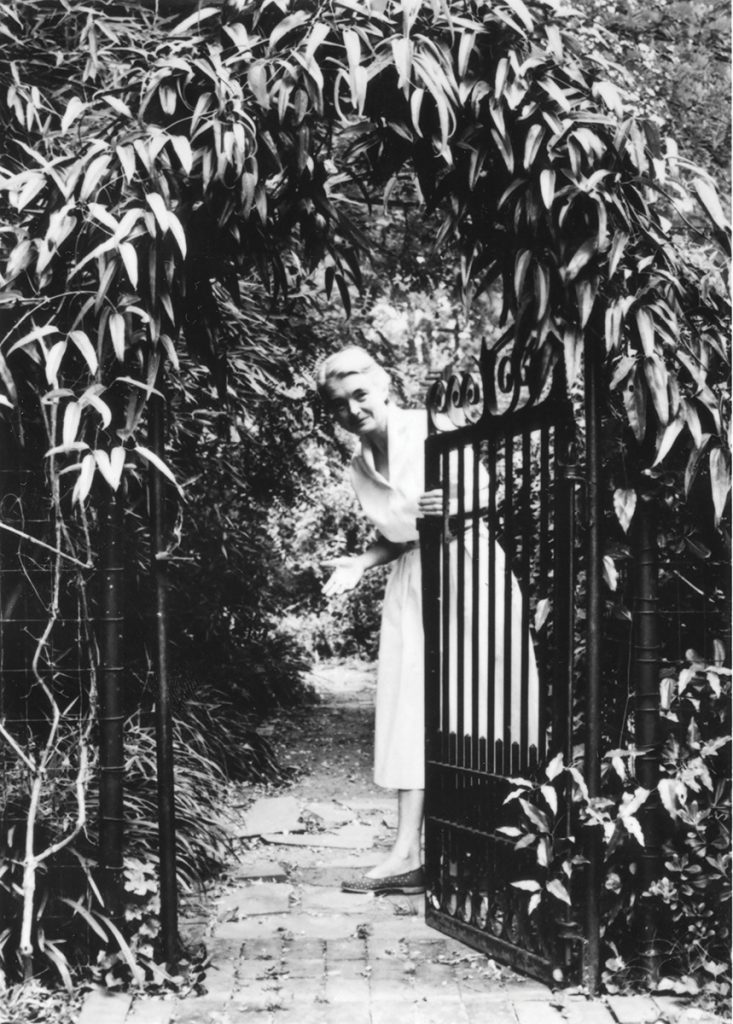
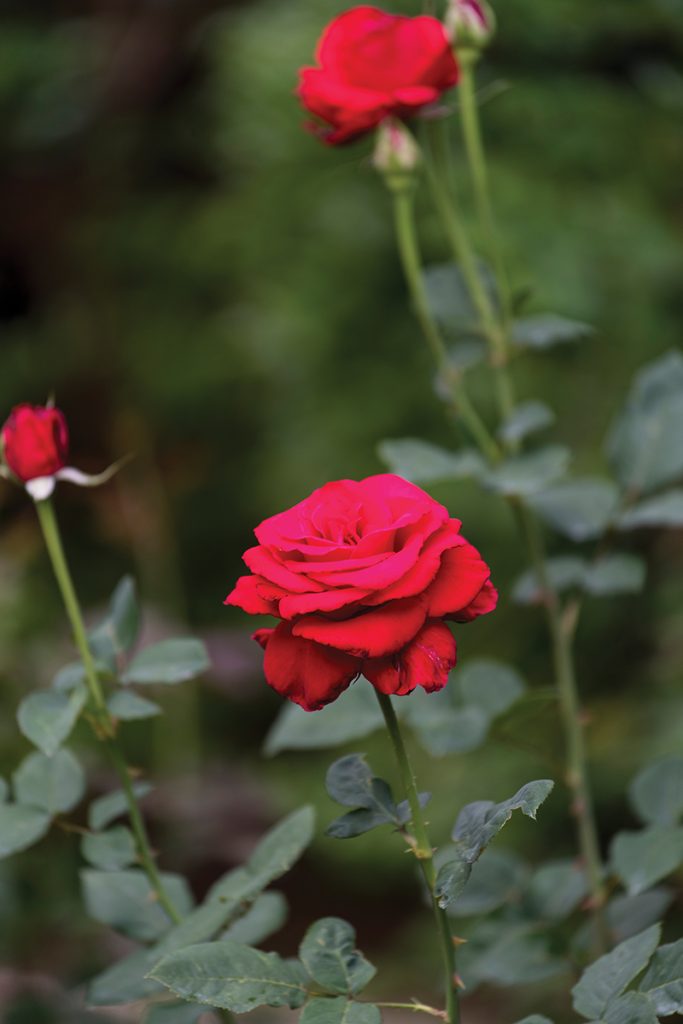
On a warm spring day, Penny Hage walks through her Canterbury Road yard, pointing out the flowers in bloom and describing how others will look when they reach their peak.
“Now, this rhododendron is original to the house. They don’t like our climate, but they’re doing pretty well here,” she says, pointing to the pale pink flowering shrub that is known for growing wild on cooler mountainsides.
“This Tea Olive shrub grows tall like a tree. It has little white flowers that are unbelievably fragrant, like perfume,” Hage continues. “It blooms in the spring, summer or fall. You never know.”
In the backyard she approaches a tree at the corner of the house.
“This golden rain tree is my favorite thing in the yard. It blooms a gorgeous yellow in June and July,” Hage says, spreading her hands above either side of her head. “And all round here beneath it are Lenten roses.
They bloom before spring. She designed the yard so there would always be something blooming throughout the year.” The “she” Hage refers to is Elizabeth Lawrence, the first woman to receive a degree in landscape architecture from North Carolina State University’s School of Design in 1932.
In 1942, Lawrence’s book A Southern Garden: A Handbook for the Middle South received national praise and established her as a horticulture authority whose knowledge was compared to that of Thomas Jefferson. It is listed among the “100 Best Gardening Books” by Horticulture magazine.
These days, only traces of Lawrence’s influence remain in Raleigh. Her house on Park Avenue, near NC State, was bought by the school’s FarmHouse Fraternity in 1969 and taken down in 2004 to make room for a bigger structure. Many of her plants were moved to the JC Raulston Arboretum to create the Elizabeth Lawrence Border.
During her time in Raleigh, Lawrence designed various residential projects that have since been lost, as new homeowners opted for different landscapes or let Mother Nature take over. But one of the landscapes she designed, the front and back yards of this Canterbury Road home her good friends Nella and Alfred Purrington Jr. built in 1940, still shows her influence.
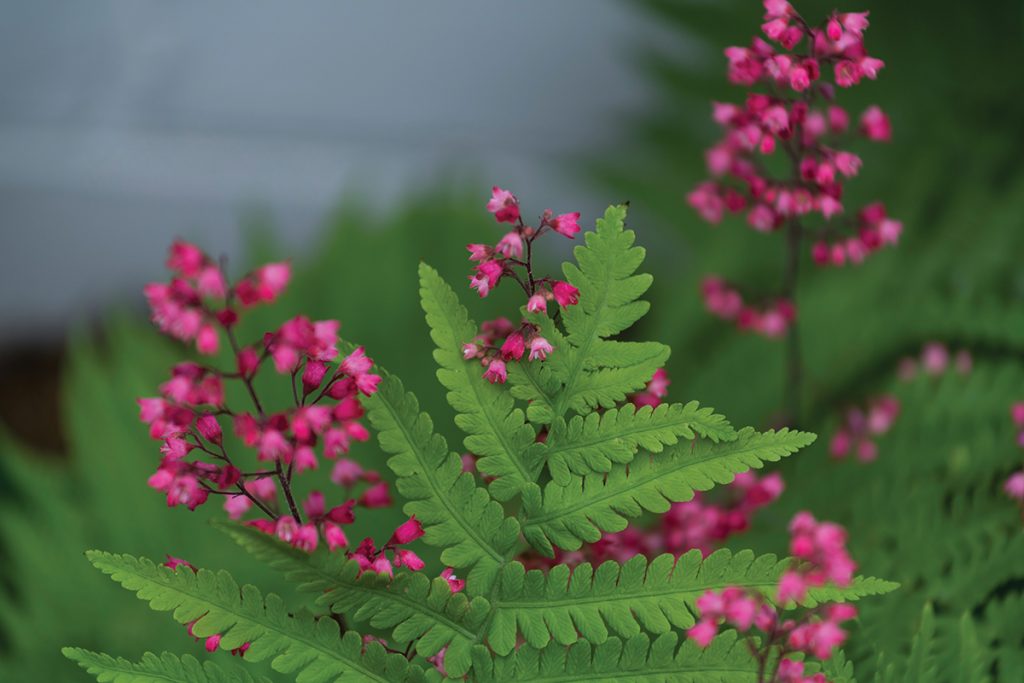
Early Memories
“When my parents moved here, it was just a dirt road and considered to be way out of town,” says Ward Purrington, Nella and Alfred’s son. Ward, the youngest of three children, was born in 1940, the year his parents moved to Canterbury Road. He points to the rooftops that now line the back of his former yard and says when his family bought the property, it stretched 2 acres or more down the hill to Beaver Dam Creek and Banbury Road. “When my father was away in World War II, my mother sold some of the land,” he says. “They decided she might need the money in case he didn’t come back.”
Fortunately Alfred returned. He continued working as a lawyer as well as spending countless hours in the yard for decades. Ward, who also practiced law, remembers being photographed as a young boy with his mother in The News & Observer for a story about their prolific yard where, more than 70 years ago, he’d play “Mother May I?” with his siblings.
“My mother did not work in the yard,” says Ward with a chuckle. “My father did all the work. She would watch him from inside and bring him water.”
The gurgling pond under a shady trellis designed by Lawrence was, and still is, a distinctive feature.
“We had a bronze dolphin and the water came out of the dolphin’s mouth. My parents got it in Italy,” Ward says. “I remember releasing goldfish into the fountain when we were little,” says his niece, Beth Alley, who visited the home often when her grandparents Nella and Alfred lived there.
Ward’s nephew John Purrington, who also visited frequently, describes family soccer games played in what they called “the soccer field,” a rectangular grassy area to the left of the driveway. It seemed regulation size to a child, he explains, but was really more a small patch of grass. “And we would make fairy villages in the roots of the trees,” recalls Ward’s daughter, Ginna Purrington. They also played tennis on a “clay court” with a makeshift net behind the yard as the woods began. “It was just North Carolina red clay,” Ward says with a soft chuckle.


A Shared Appreciation
Now in his 80s and living in Raleigh, Ward recently visited the home where he grew up, accompanied by Ginna, Beth and John. Ginna teared up when she walked in the backyard. “This is the first time I’ve been here in almost 20 years. It brings back so many memories,” she says, offering one of those smiles that is simultaneously sad and happy.
“They have done a beautiful job,” Ward says, referring to how Penny Hage and her husband Bill have kept the property’s rich history of flora and fauna going strong.
Penny says it was the yard and its horticultural history that was the deciding factor when they bought the house in 2013. (The Hages purchased it from the couple who bought the home after Nella Purrington died.) “We fell in love with this house because of the outdoor spaces,” Penny says. “Bill and I are yard people. My mother and dad were huge gardeners. My father had a rose garden.”
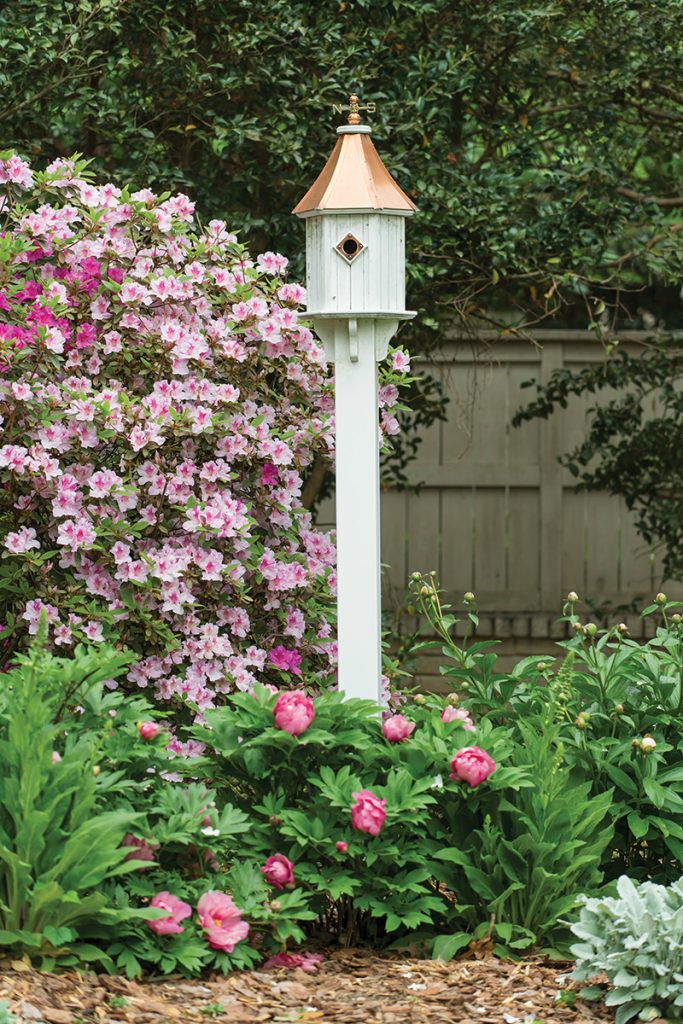
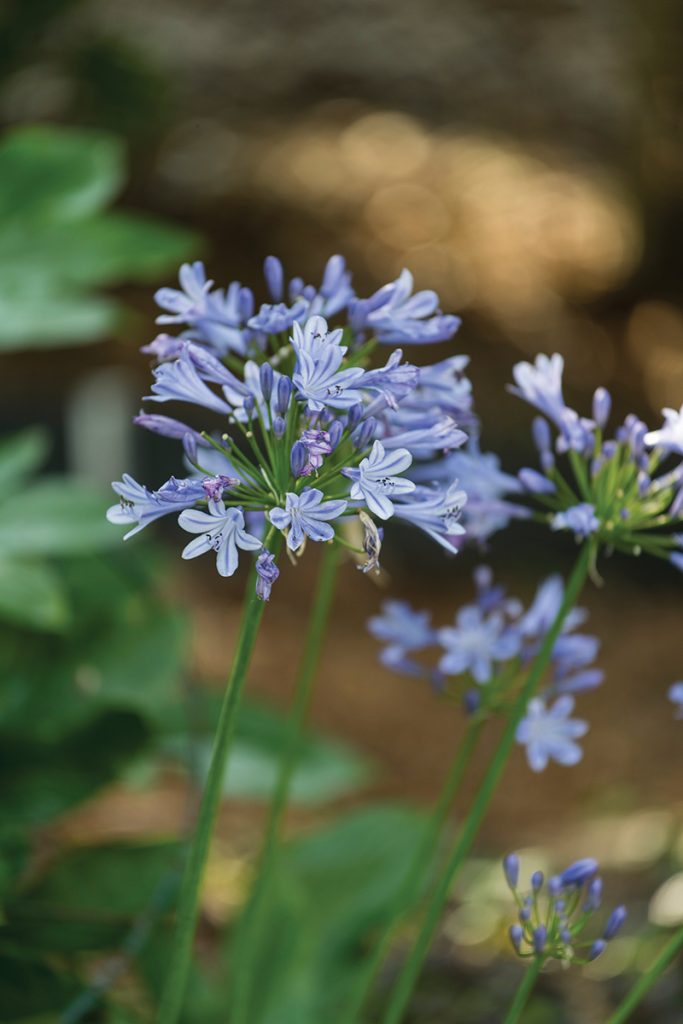
She credits recently retired master gardener Frances Alvarino for a lot of help in tending to the yard and teaching them about its many facets. “Bill and I spend hours in this yard,” Penny says, adding with a laugh: “We don’t talk to people. We talk to plants.”
Those hours are hard to come by for the busy family. Bill is an orthopedic surgeon and also the team physician for all athletics at Leesville Road High School. Penny is a part-time pediatric occupational therapist. They also raise funds that support a special needs clinic at Tenwek Hospital in Kenya. The family has volunteered there three times with Bill’s parents as medical missionaries.
Daughter Mimi recently graduated from Saint Mary’s School and is starting Wofford College. (Ironically, Lawrence the landscape designer attended SMS for junior college before Barnard College in New York City, followed by graduate school at NCSU.) The Hages’ son, Preston, is a rising junior at Needham Broughton High School and a competitive golfer.
Preston is the impetus for a significant change the Hages brought to the backyard: adding a putting green. Covid is the reason for the pool that sits beside it. “I didn’t want a pool because I knew we’d have to cut down the fig trees,” says Penny, who learned to make fig preserves and gave custom jars out as gifts for almost 10 years. But the pool offered a wonderful family activity during those many homebound months. They lost the trees, but made sure the fountain remained.
In fact, Penny’s uncle, contractor Lewis Penny of Penny Construction, added more history to the backyard’s gurgling centerpiece when he oversaw the 2022 renovation of the house and property. Two of the big chiseled rock stones from the row of pavers in the original driveway were moved to either end of the fountain and repurposed as mounting for water spouts.
“Those stones were foundation stones in my great-great-grandfather’s house on Halifax Street. We moved as many as we could when the house was torn down,” explains Ward, noting that the home and others around it were dismantled and redeveloped in the 1960s.
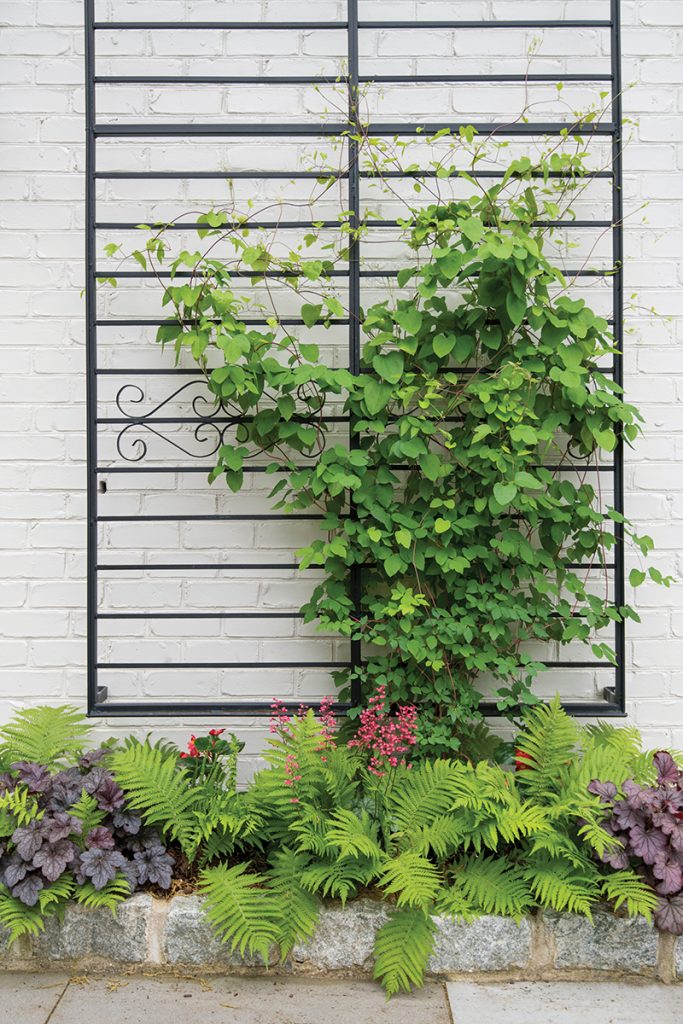

Ward smiles at the tall wrought-iron trellis that the Hages anchored on a wall behind their patio — decades ago, this same wrought-iron served as a railing surrounding the patio off of his parents’ bedroom. (Lewis Penny thought of that special touch as well.)
When asked to name his favorite flower in the yard, Ward, like Penny, leans toward the golden rain tree. Elizabeth Lawrence, the original architect of this landscape, also loved its summer blooms. In A Southern Garden, she stresses that June can be as “flowery” as April, if you know what to plant. She describes the golden rain tree with its yellow summer blooms as “a light, graceful specimen, twenty or thirty feet tall.”
Kindred souls.
This article originally appeared in the September 2024 issue of WALTER magazine.

